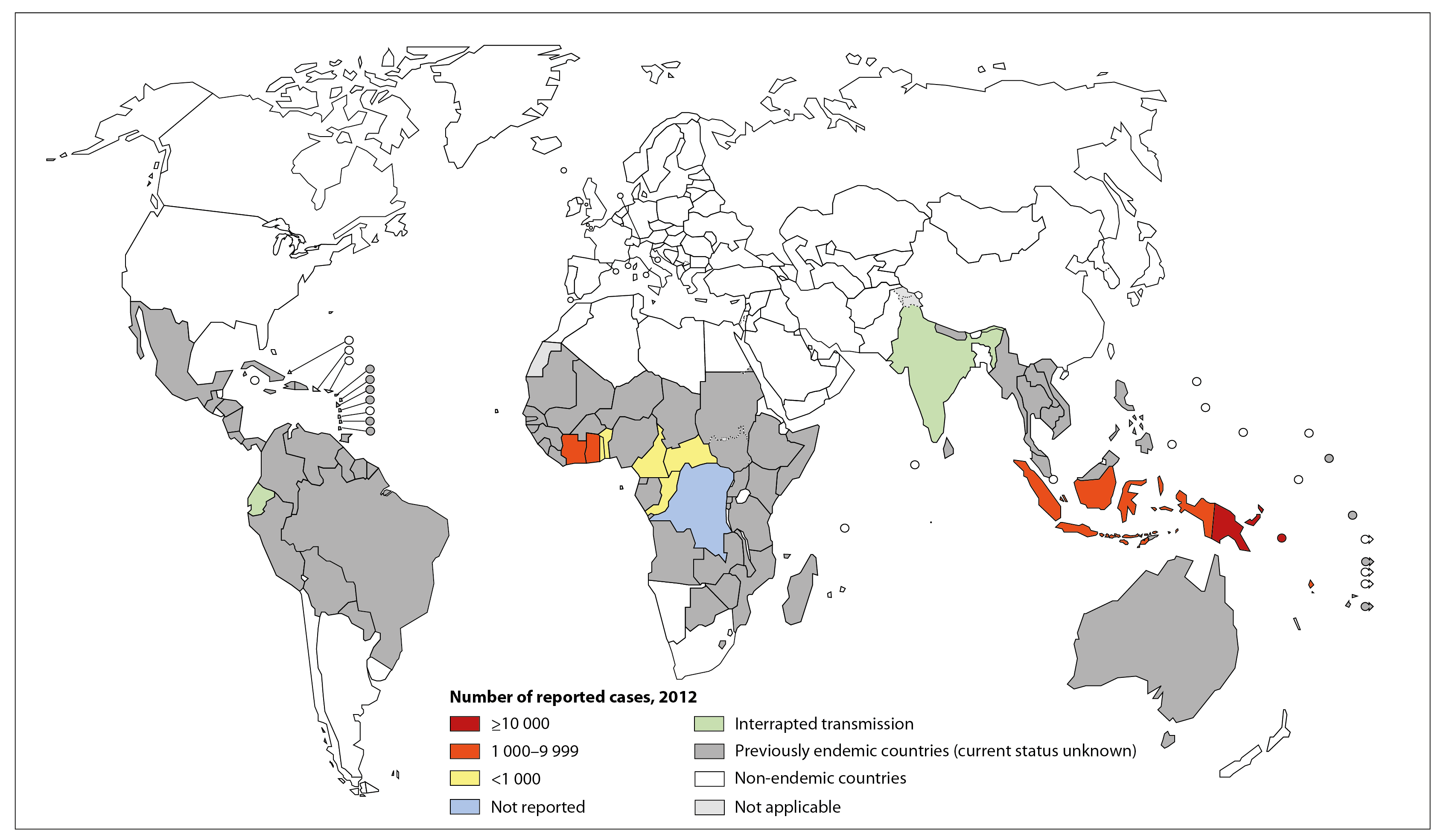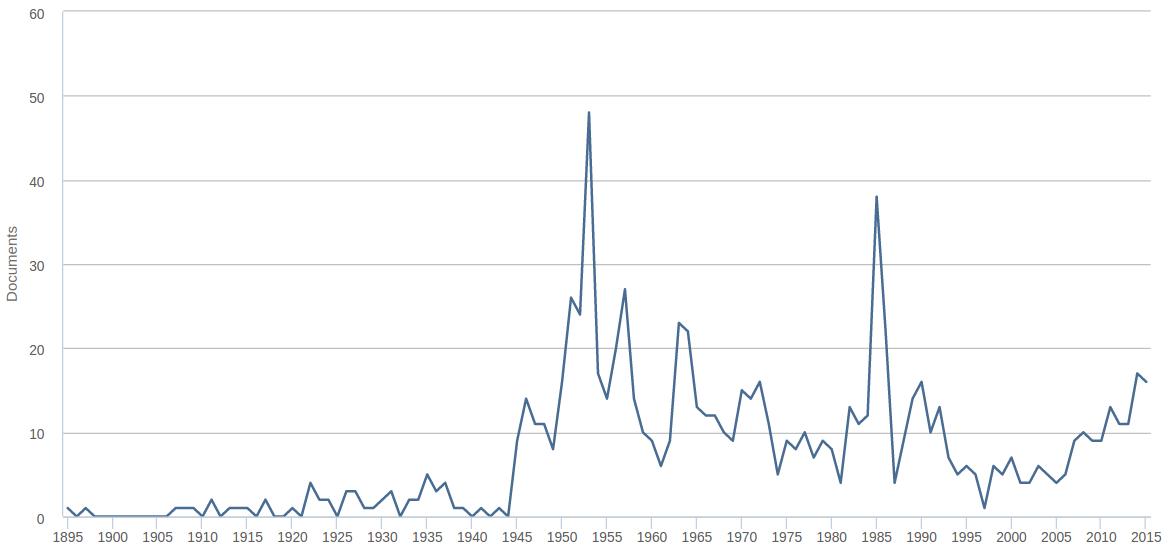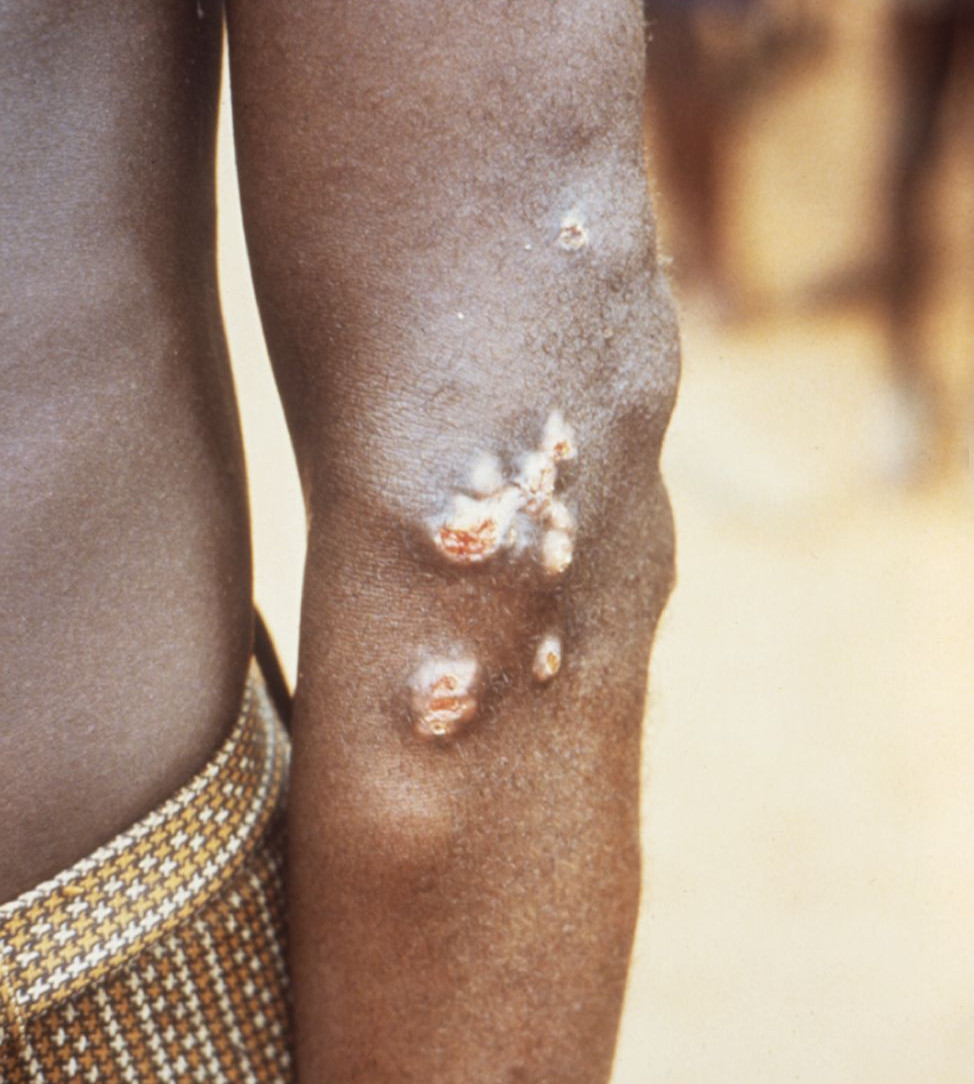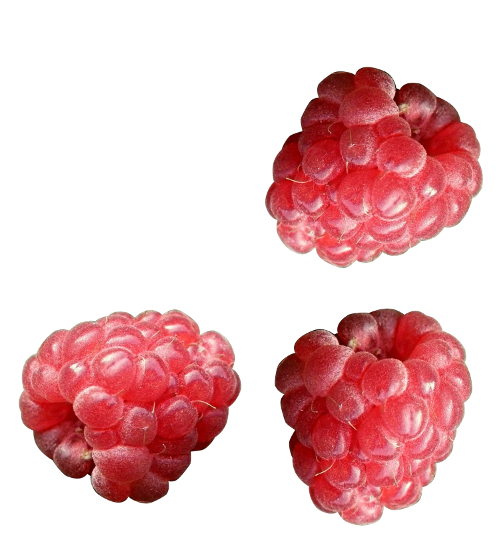The Impending Elimination of Yaws
By: Jordan Poles
Abstract:
Yaws is a human disease found predominantly in tropical regions among children. The causative agent of yaws, Treponema pallidum pertenue, is a spirochete bacteria closely related to syphilis - in fact, it is classified as the same species. Notably, unlike syphilis (a STD) yaws is transmitted by skin-to-skin contact. The symptoms of yaws are different from syphilis and include: the appearance of papillomatous lesions, arthralgia, malaise, bone and cardiovascular degradation. Of particular note, yaws is easily treatable using a single dosage of antibiotic. As such, yaws is actually rather close to being eliminated, putting it on the short list which includes only smallpox. The WHO estimates that the pathogen will no longer trouble mankind after 2020.Taxonomy:
- Domain: Bacteria
- Phylum: Spirochaetes
- Class: Spirochaetia
- Order: Spirochaetales
- Family: Spirochaetaceae
- Genus: Treponema
- Species: pallidum
- Sub-species: pertenue
(Uniprot DB, Retreived Nov. 2015)
Pathology:
Three Major Stages of Infection:First Stage:
- Mother yaw (lesion) appears at site of exposure, grows with time
- Commonly found on the legs and ankles
- Incubation period ranges from 10-90 days
- After 3 weeks to 2 years, secondary lesions appear
- Joint pain and malaise are common
- Palms and soles may fissure making walking difficult
- Develops after >5 years of untreated infection
- Chronic destruction of heart, skin and bone
(Mitjà et al. 2013)
Infection:
- Yaws is spread by skin-to-skin contact; only among humans
- It's the most common of the three endemic treponematoses (yaws, bejel and pinta)
- Typically found in warm and humid climates (tropics) among poor children
- 75% of infected are under age 15
- Infection varies with changes in humidity
- In 2013, a total of 58,915 yaws infections were reported by the WHO
- From 2008-2012 >300,000 cases were reported to the WHO; constant threat, doesn't flare up
- Yaws can be effectively treated with a single dose of penicillin or azithromycin
(Kazadi et al. 2014; Mitjà et al. 2013)
Distribution (2012):

Fig 1: The following map displays the global distribution of yaws in 2012. The disease has been eliminated from much of its historical range and is now confined to tropics in Africa and Asia/Oceania. That said, current monitoring efforts may not detect sub-clinical or latent yaws, and reporting may be incomplete.
(Kazadi et al. 2014)
A History of Yaws:
- Homo erectus skeletons dating back 1.6 million years show evidence of yaws infection
- Yaws symptoms were first described in 1648 by Willem Piso, a Dutch physician in South America
- Observations were recorded in his book on the natural history of Brazil
- The causative agent of yaws was elucidated in 1905 by Aldo Castellani, shorly after syphillis
- Penicillin emerges after WWII; discovered to be very effective against Yaws
- These two discoveries sparked a campaign to eliminate the disease from 1952 to 1964
- Global yaws prevalence dropped by 95%
- However, the eradication effort failed
(Harper et al. 2008; Mitjà et al. 2013; Rinaldi 2012; Rothschild et al. 1995; Stamm 2015)
Trends in Research:

Fig 2: A plot of the number of scientific articles published on yaws from 1895 to 2015. Following the description of yaws in 1905, the scientific community began to engange in research on the pathogen. The largest spike in interest occured around the 1950s in response to the WHO elimination effort.
(Scopus Search, Retreived Nov. 2015)
Studying Yaws:
- Yaws cannot be grown in culture; it only survives in mammalian tissues
- The pathogen is easily killed by changes in environment (drying/heating)
- Replicates very slowly (30-33 hrs per division)
- Researchers typically grow the pathogen in rabbits and golden hamsters
- Genetic analysis suggests that yaws is the oldest of the treponemal diseases
- No known pathogens infect T. pallidum
(Harper et al. 2008; Mitjà et al. 2013)
Origins of a Name:

Fig 3: Lesions typical of yaws.
Image is in public domain
(retrieved from Wikipedia)
(retrieved from Wikipedia)
The term yaws originates from either:

- The Carib term for sore (yaya), or
- The African term for berry (yaw)

(Mitjà et al. 2013)
Elimination Efforts:
- Yaws was the first disease slated for eradication after the establishment of the WHO in 1948
- This attempt failed: yaws reemerged from pockets of disease which escaped detection
- Yaws should be one of the easier diseases to eliminate
- In 1996, India began a highly successful campaign to eliminate the disease
- Distributed educational materials; cash rewards
- Serological and home-to-home monitoring
- No cases reported since 2004
- This success encouraged the renewal of elimination efforts in 2012
- Oral azithromycin treatment may improve success: simple and painless
(Rinaldi 2012; Narain et al. 2015)
Barriers to Elimination:
WHO hopes for elimination by 2020, but...- Complete elimination of yaws will be necessary, otherwise it will reemerge as in the first campaign
- Serological testing is needed in order to identify subclinical cases
- Vaccination against yaws is not possible; reinfection is possible
- Reservoirs of infection exist among young children
- Animal reservoirs are present, however cross-species transmission is not evident at this time
- Need for continued monitoring to detect outbreaks and evolution of antibiotic resistance
- Cost of elimination estimated at $362 Million
Nonetheless, elimination is quite feasible!
(Fitzpatrick et al. 2014; Kazadi et al. 2014; Mitjà et al. 2015; Rinaldi 2012)
References:
- Fitzpatrick, C., Asiedu, K., & Jannin, J. (2014). Where the road ends, yaws begins? The cost-effectiveness of eradication versus more roads. 8(9), e3165.
- Harper, K. N., Ocampo, P. S., Steiner, B. M., George, R. W., Silverman, M. S., Bolotin, S., et al. (2008). On the origin of the treponematoses: a phylogenetic approach. PLoS Negl Trop Dis, 2(1), e148.
- Kazadi, W. M., Asiedu, K. B., Agana, N., & Mitjà, O. (2014). Epidemiology of yaws: an update. Clinical epidemiology, 6, 119.
- Mitjà, O., Asiedu, K., & Mabey, D. (2013). Yaws. The Lancet, 381(9868), 763-773.
- Narain, J. P., Jain, S., Bora, D., & Venkatesh, S. (2015). Eradicating successfully yaws from India: The strategy & global lessons. The Indian journal of medical research, 141(5), 608.
- Rinaldi, A. (2012). Yaws eradication: facing old problems, raising new hopes. 6(11), e1837.
- Rothschild, B. M., Hershkovitz, I., & Rothschild, C. (1995). Origin of yaws in the Pleistocene. Nature, 378(6555), 343.
- Scopus Scientific Paper Search - Yaws
- Stamm, L. V. (2015). Yaws: 110 Years After Castellani's Discovery of Treponema pallidum Subspecies pertenue. The American journal of tropical medicine and hygiene, 15-0147.
- Uniprot Database: Taxonomy - Treponema pallidum subsp. pertenue